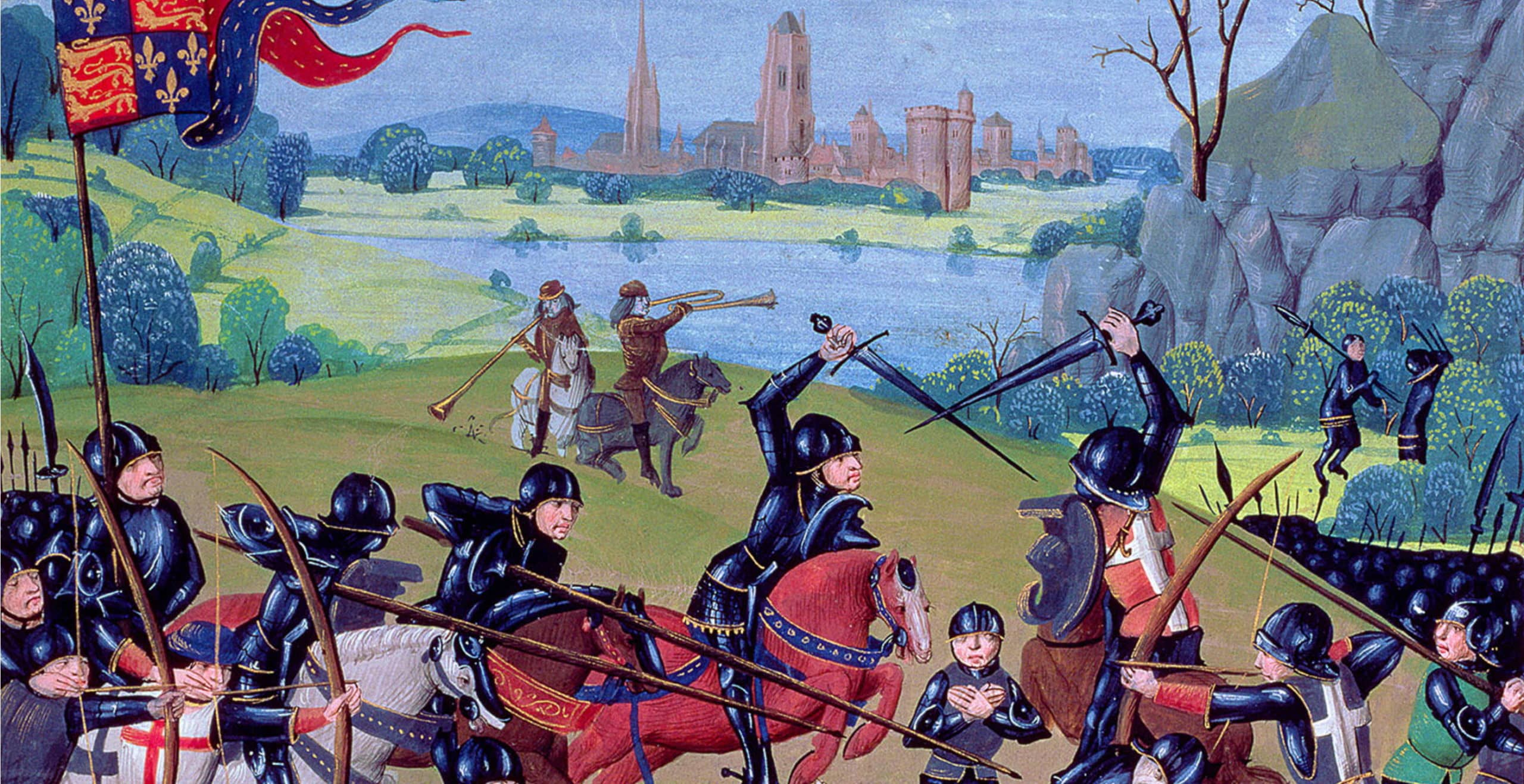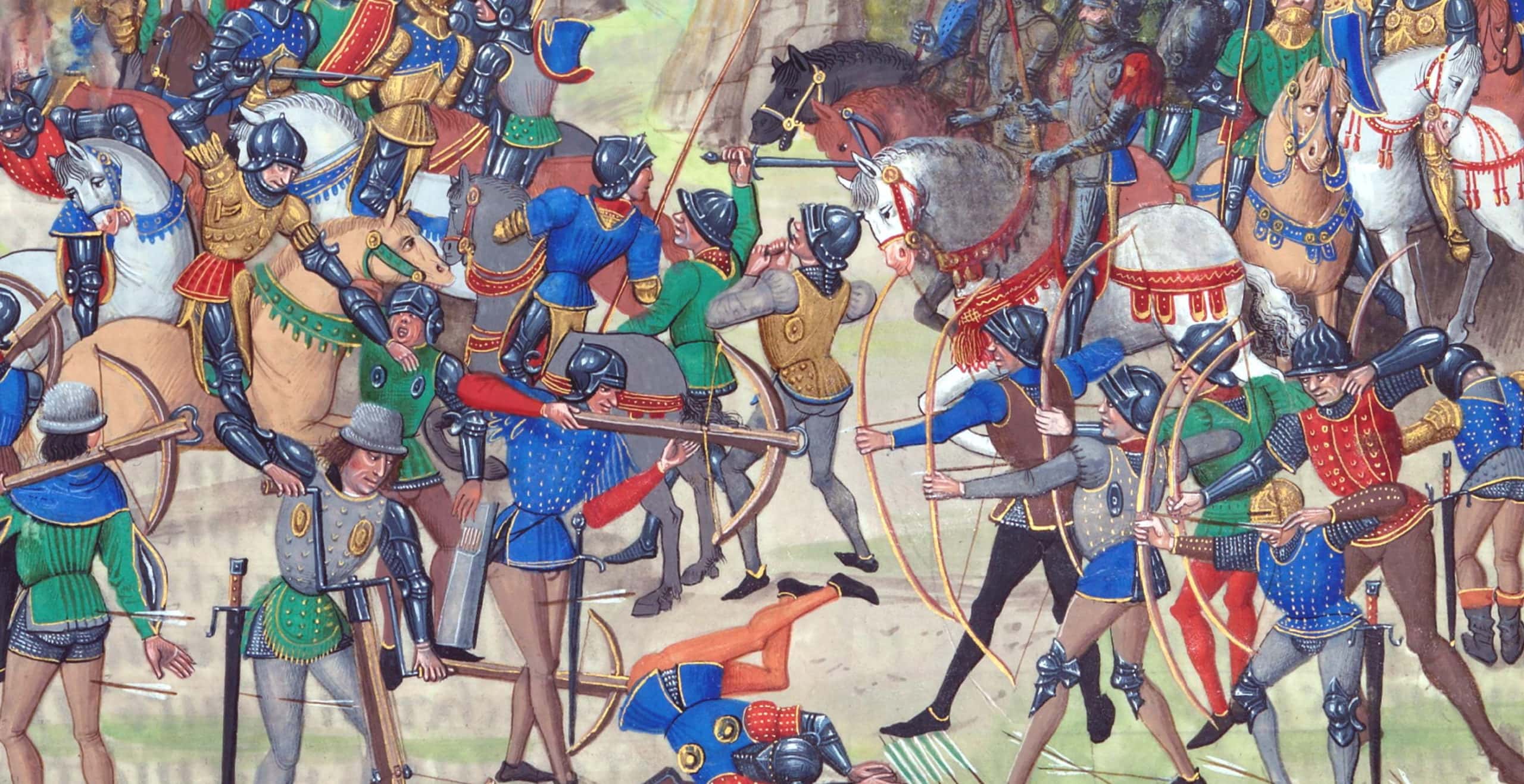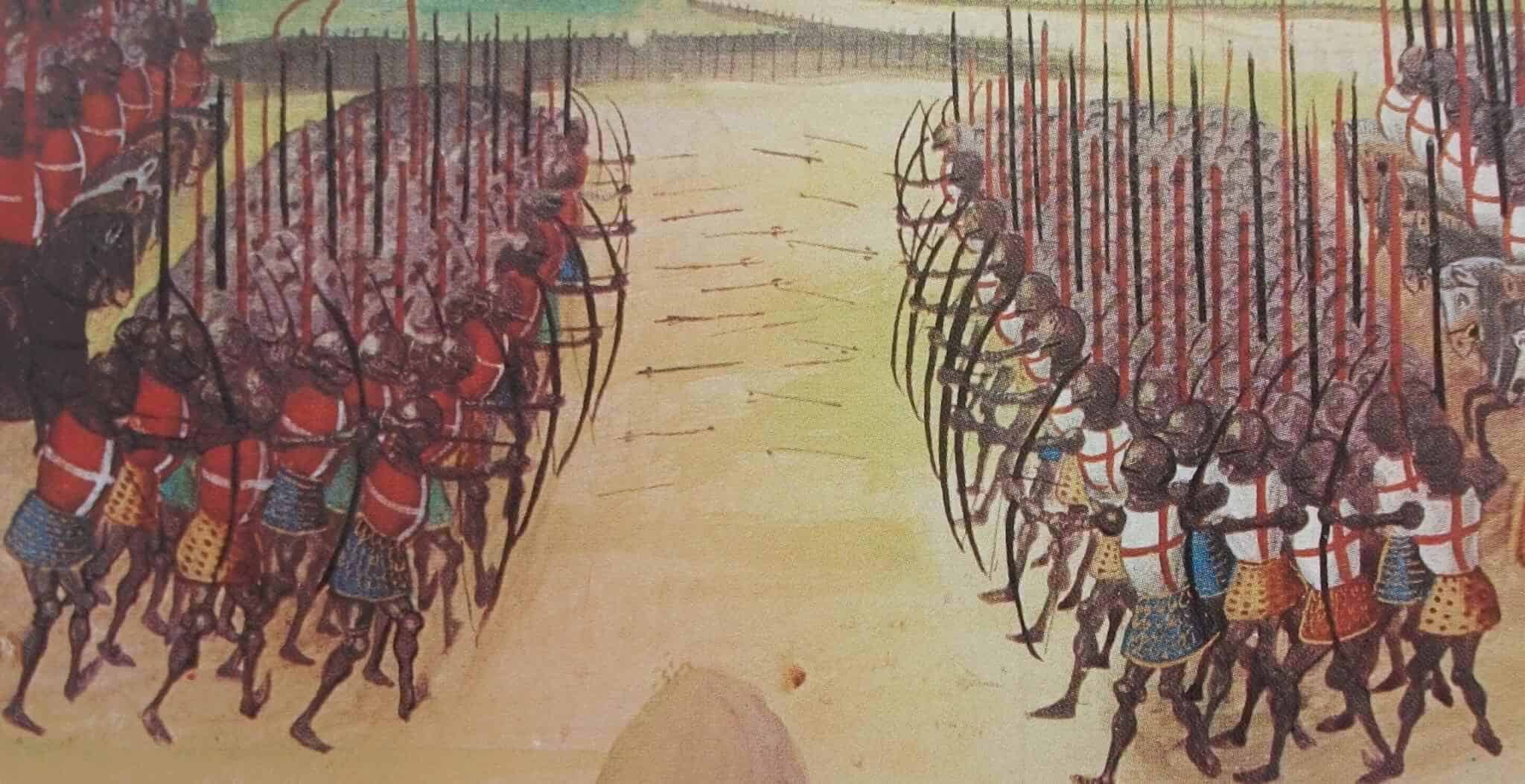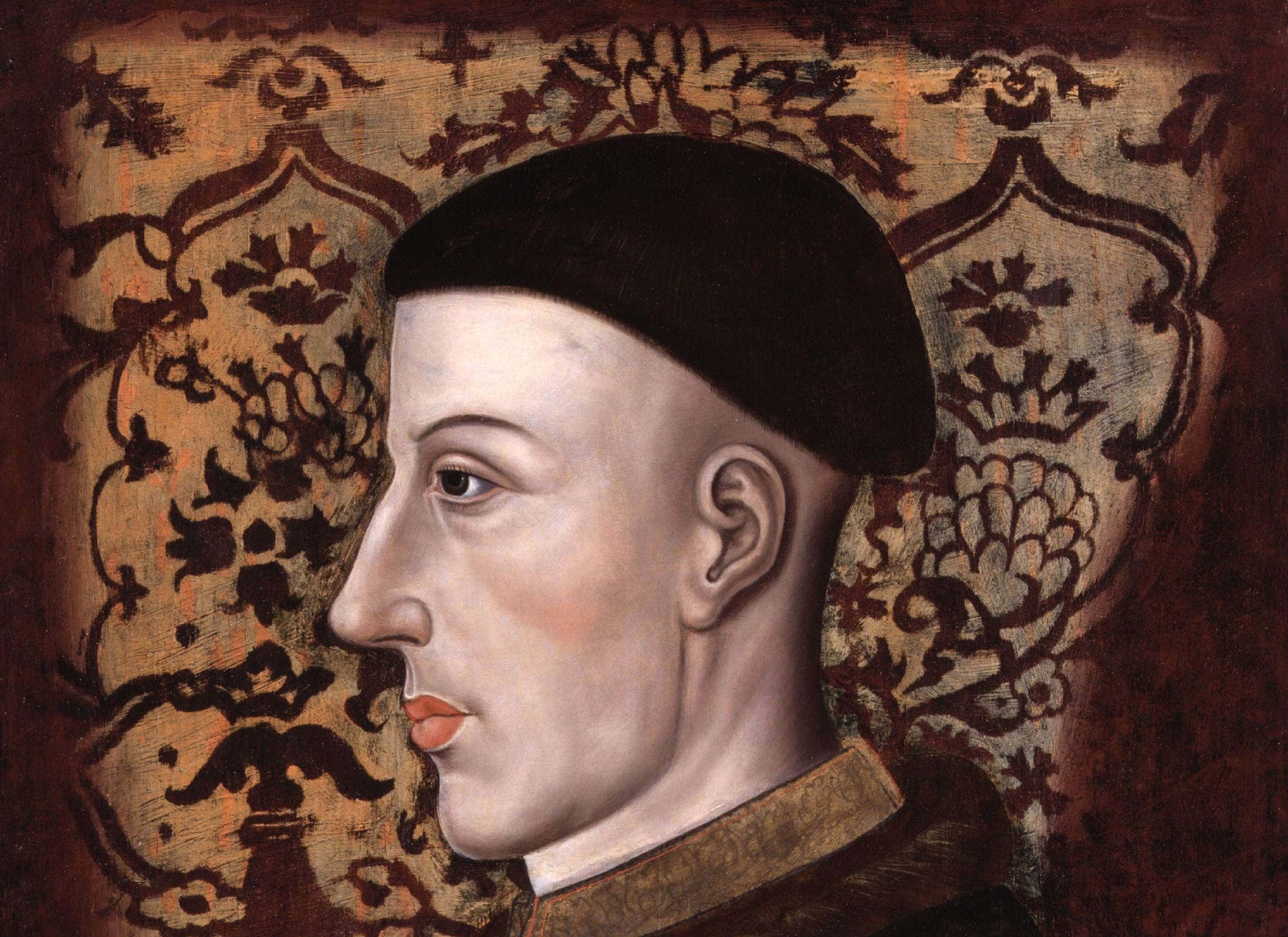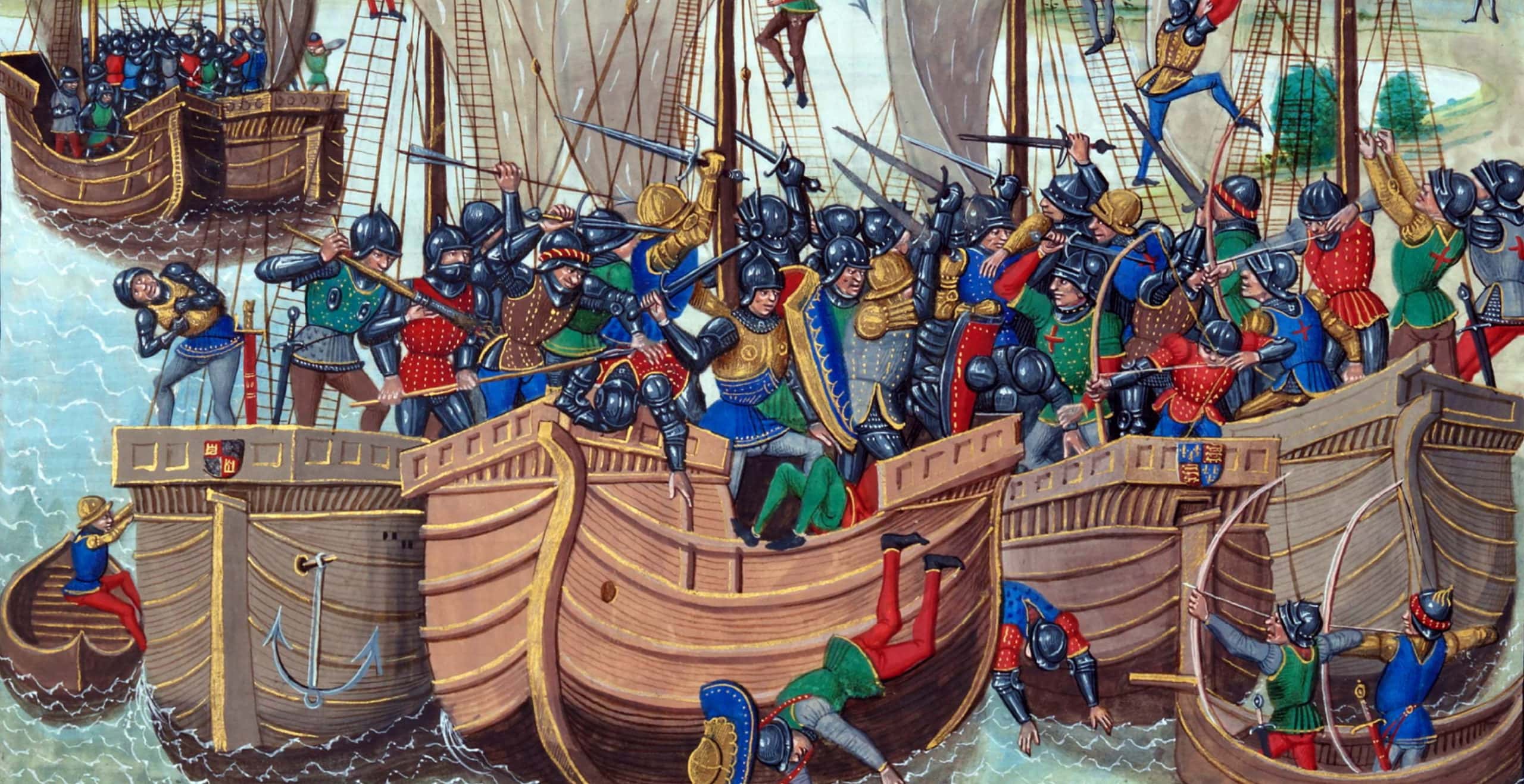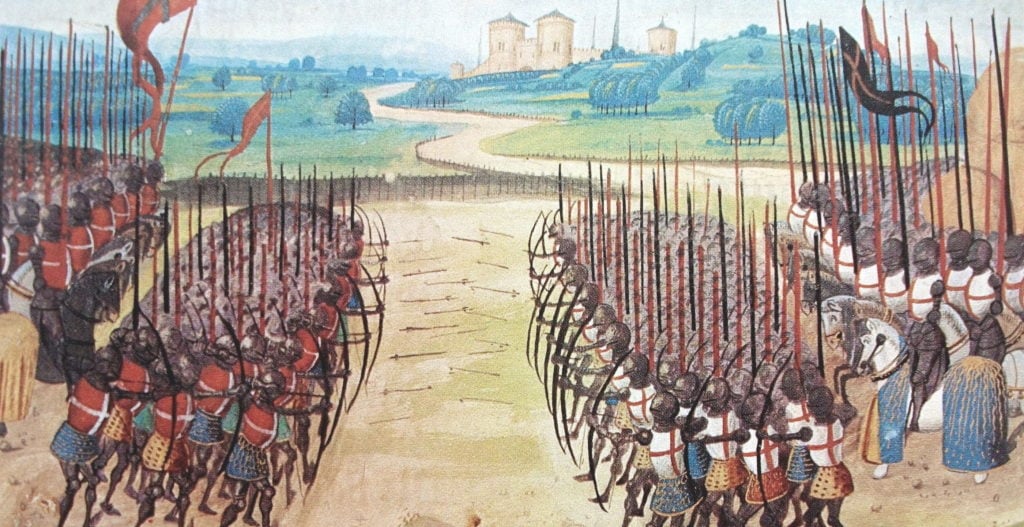In 1413 Henry V was crowned king and two years later he made clear he was ready to reclaim the historic lands of his forefathers.
By 1415 war had resumed, with this phase of conflict known as the Lancastrian War named after the new ruling house of the Kingdom of England, the House of Lancaster. Under King Henry V, an invasion of Normandy in 1415 would instigate the third and final encounter between the two rivals.
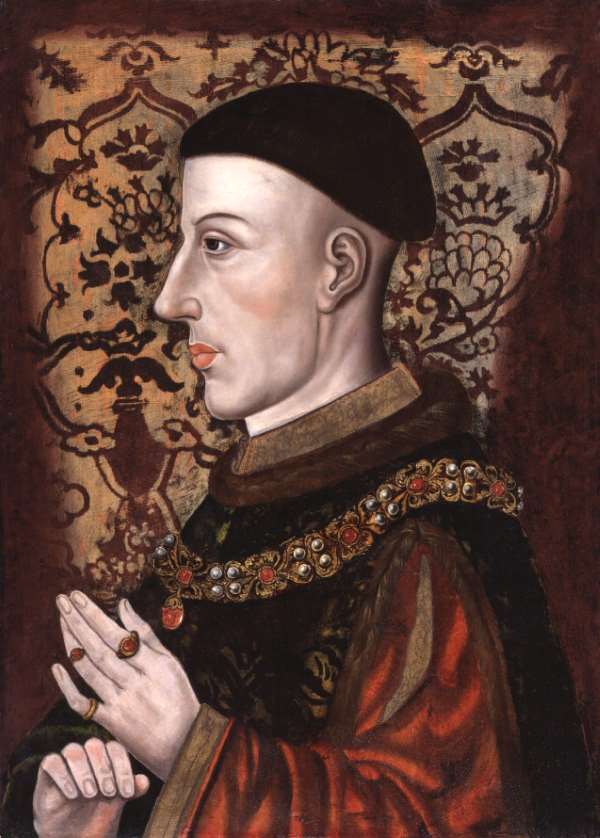
A year earlier, Henry had entered into negotiations with the French and laid down his requirements. He would concede his claim to the French throne in exchange for 1.6 million crowns in unpaid ransom for John II, in addition to the French ceding the lands of Normandy, Touraine, Brittany, Anjou, Flanders and possibly the most contested of all, Aquitaine.
Sadly, a settlement did not come to fruition, with the English monarchy feeling that their demands had been mocked by the French. With antagonisms growing between the two parties, the resumption of war seemed inevitable and in April 1415, Henry consulted the great council in order to sanction war with France.
This was an advantageous time for Henry to act, as civil conflict between the Armagnacs and Burgundians contributed to an already fragile political state in France, with the kingdom still bound by the shackles of Charles VI’s mental incapacity.
Without further ado, Henry sailed to France in August 1415 with a force of around 10,500 men whose first task was to lay siege to the city of Harfleur in Normandy. Within a month and despite the best efforts of the city’s own residents to resist, the siege proved a success for the English and was handed over on 22nd September.
Sadly, the victory of the siege proved short-lived for the English as the army suffered a devastating outbreak of dysentery which lead to enormous casualties and loss of life. They would, after a delay, march on towards English occupied Calais, however Henry and his men would find themselves ambushed en route and forced to engage in one of the most famous battles of the entire Hundred Years’ War, the Battle of Agincourt.
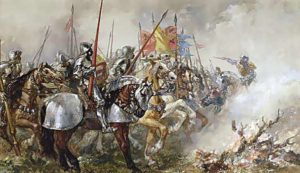
Initially, the prospect of an English victory looked incredibly unlikely as the disparity in numbers was alarming with estimates of around 5000 English troops compared to 50,000 French.
The only thing that could save Henry and his men was strategy. By adopting a position on the field at its narrowest point, a bottleneck would be created for the much larger number of French soldiers. Moreover, the use of the arrow in medieval warfare was paramount and would help force the French into a retreat as they succumbed to the muddy conditions of their charge whilst arrows rained overhead.
In the end, Henry V and his troops miraculously inflicted a damming and catastrophic defeat on the French, contributing to an enormous loss of life, including many of the Armagnac leaders. Such was the scale of the victory, that the number of French prisoners was purported to outnumber the amount of English soldiers, leading Henry to give an order for their deaths.
This was an overwhelming victory which allowed Henry to return to England triumphantly as the warrior king.
English forces would capitalise on this success and by January 1419 forced Rouen to surrender.
Eventually, these conditions forced the French into more compromises, particularly after the Duke of Burgundy entered into an alliance with Henry after he had taken control of Paris. The Burgundian alliance would greatly benefit Henry V as it forced the hand of Charles VI to sign the Treaty of Troyes.
Moreover, Henry would subsequently marry Charles VI’s daughter, Catherine of Valois, ensuring that any children between them would be legitimate heirs to both the French and English throne.
The details of this agreement would be put into practise in 1422 when both Henry V and Charles VI passed away, leaving the infant Henry VI as heir to the English and French throne and leaving Charles VII’s claims to the crown illegitimate.
This however did not go down well with all parties involved, particularly the Armagnacs who were loyal to the displaced Dauphin Charles VII. Thus, motivated to reverse the fortunes of the French royalty, a new surge of hostility continued and the war waged on.
In 1424, the English successes continued under the Duke of Bedford at Verneuil against a Franco-Scottish army. The English continued to grow in strength, extending their territorial reach further reaching from the Loire, to Burgundy and Brittany. Such great conquering prowess however had its consequences and inevitably led to great strains on resources.
Another hindrance to the probability of an English victory came with one important and later historic individual by the name of Joan of Arc.
Born in Lorraine in the northeast of France, by the age of eleven Joan had claimed to have had visions from St Catherine, St Margaret and the archangel Michael. Thus, believing it to be her destiny to save France, she offered her services to the ousted Charles VII.
Whilst Charles was keen to use her services, he wanted to be sure that her powers and revelations were true and so he chose to disguise himself as a courtier whom he switched places with in order to test Joan’s ability to recognise the real Dauphin.
Her legitimacy was proven when she bypassed the courtier dressed as Charles VII and turned to face the real king, bowing before him, demonstrating her revelations could be trusted.
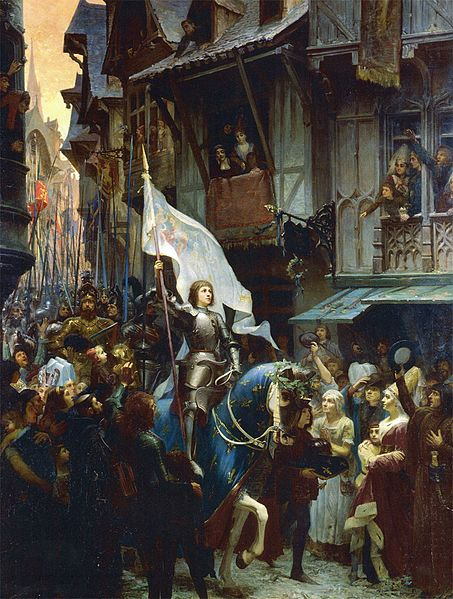
In the meantime, the English continued on their campaign and in 1428 laid siege to Orléans, a challenge given its extensive fortification.
With the siege in full swing, Joan of Arc requested that the Dauphin send her to the siege along with a relief army. Charles VII agreed and alongside the troops, she arrived in Orléans, instantly boosting their morale and rather remarkably only nine days later the siege was lifted and the English had failed.
As such a significant and strategic French victory had been achieved and only nine days since Joan’s arrival, the belief in her powers grew.
This gave new impetus to the French forces who were able to achieve further victories and in the process reclaim regions taken by the English. One such victory which changed the dynamics was the Battle of Patay in June 1429 which led to a crushing defeat for the English and the loss of many important commanders.
Inevitably, the English would not recover whilst the French grew in strength and with Joan of Arc at the helm, swept through vast areas with renewed determination and confidence, retaking lost territory from the English and paving the way for the Dauphin Charles VII and his coronation at Reims on 17th July 1429.
The optimism and rigour had been recaptured by the French and with that, the Crown reclaimed by the Dauphin and its people.
Joan of Arc had been a vital factor in facilitating such a victory, a leader and a symbol for the French who had the power to change their fortunes and secure victory at the most crucial time.
Sadly, Joan’s prominence led to her becoming a target and in May 1430 she was captured by the Burgundians, still allied to the English and put on trial for various charges. The pro-English bishop, Pierre Cauchon found her guilty and on 30th May 1431 she was burnt at the stake, leaving behind a legacy of French resistance which would forever be imbedded in the bedrock of French identity and culture. Today her fame and status is no less diminished and she remains a notable symbol in France.
Sadly for the English, the loss of Joan of Arc did little to bolster their chances of victory as their defeats continued at the hands of the French.
In 1444 a treaty was agreed by Henry VI and Charles VII, with some of the terms including the arranged marriage of Charles’s niece, Margaret of Anjou. Inevitably, the agreement collapsed as Charles had greater plans for military domination.
In the meantime, England would suffer greatly both at home and abroad as the failure of the treaty brought about political infighting, deepening rifts that would in time contribute to the War of the Roses.
In France, England failed to hold on to its territories, so much so that the Battle of Formigny in 1450 cemented the losses in Normandy, paving the way for the French to capture England’s last stronghold.
Slowly but surely, the French had reclaimed their territories, whilst the English could only look on in dismay at the loss of their continental possessions.
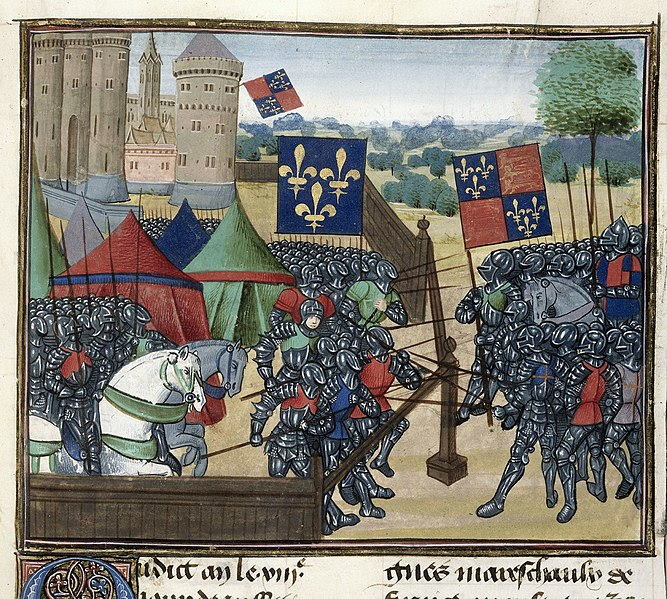
Finally, in 1453, the English secured their fate at the Battle of Castillon where the commander John Talbot, the Earl of Shrewsbury fatally led his men into a fortified French encampment. The result was an extensive loss of life and the final seizure of land by the French, finalising the English losses and recalibrating the balance of power on the French mainland once and for all.
Thus, the battle concluded a war which had dragged on for generations, spurred by a succession crisis and fuelled by competition and power. Both sides had suffered losses and experienced great historic victories in battle however, like in all conflicts, a victor emerged and this time, it was France.
The Valois dynasty claimed victory and the English were left to lick their wounds, mourning the loss of century’s worth of manpower, territorial victories, economic gains and international prestige. Whilst one kingdom rejoiced, another grieved. The One Hundred Years’ War was over.
Jessica Brain is a freelance writer specialising in history. Based in Kent and a lover of all things historical.
Published: 1st December 2021
